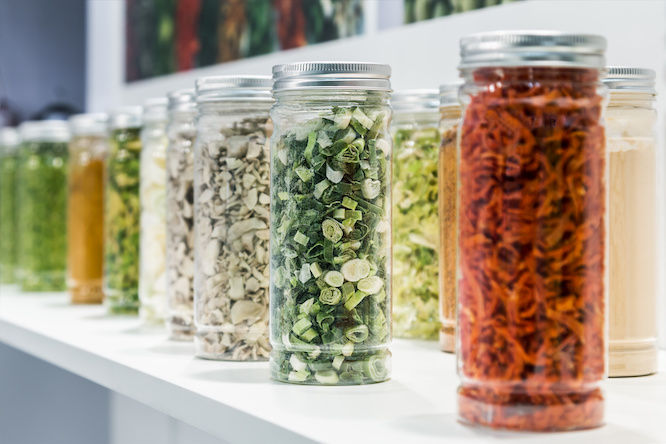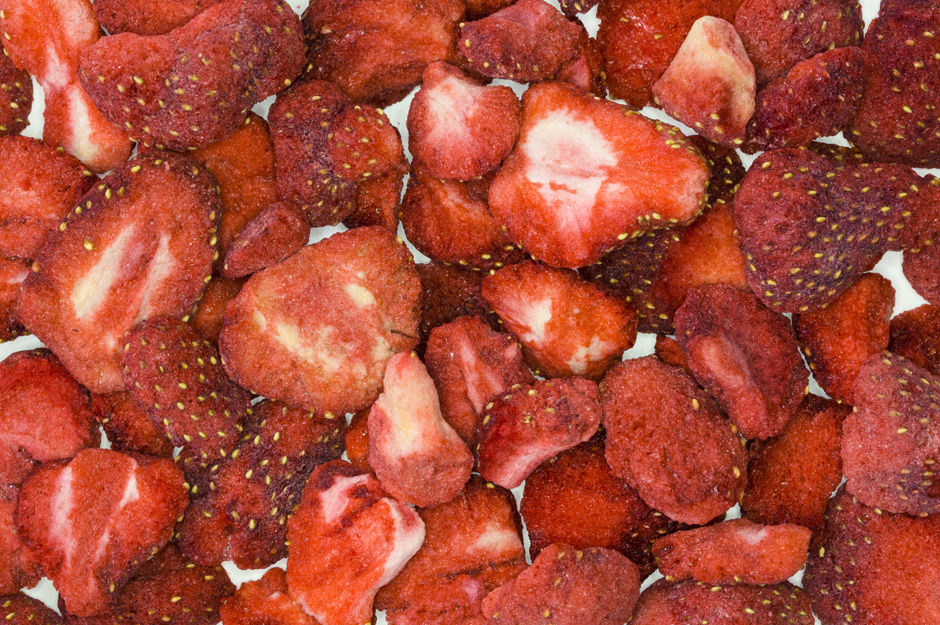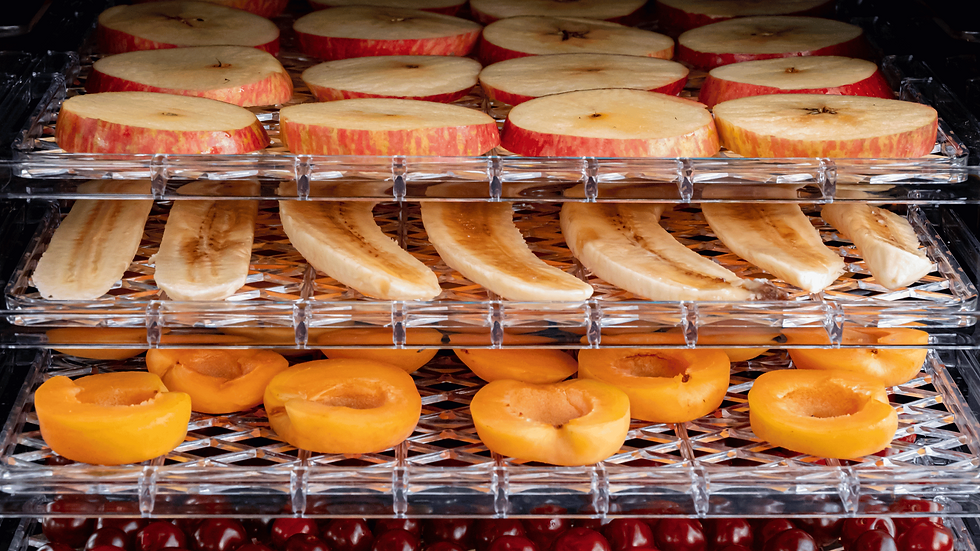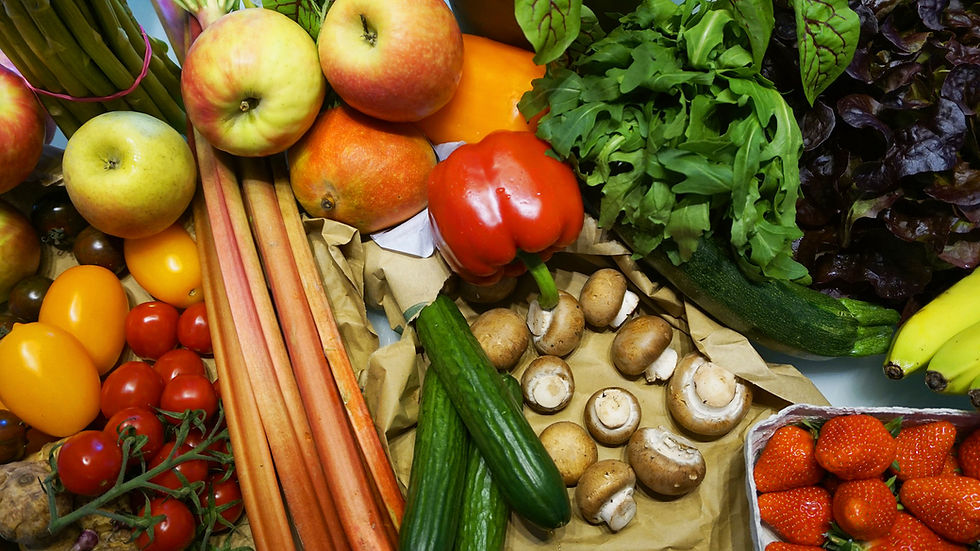The Disadvantages Of Freeze Drying
- Walid
- Aug 2
- 8 min read
The Hidden Costs of Freeze Drying Techniques
While the benefits of freeze drying are widely touted, there are significant freeze drying disadvantages that often get overlooked. The initial investment in equipment can be quite high, making it a considerable financial commitment for small businesses and home users alike. Moreover, the ongoing energy costs associated with the operation of freeze dryers can further add to the total expense over time, creating hidden costs that many don’t anticipate.
Check out our selection of dehydrated red bell peppers that are great in stews, soups, or as a quick meal accompaniment.

Maintenance and Repair Expenses
Another notable disadvantage of freeze drying is the need for regular maintenance. Equipment requires frequent checks, and parts can wear out over time, adding to the overall cost. This ongoing care can deter individuals and businesses from committing to this preservation method, particularly if they are operating on tight budgets. Additionally, unexpected breakdowns can lead to further inconveniences and financial strain.
Space Considerations
Space is often a significant concern when it comes to freeze drying. These machines can be bulky, requiring dedicated areas for installation. This requirement could limit their effectiveness in homes or small facilities that lack adequate space. If not stored properly, the equipment might also suffer damage, exacerbating the financial strain of maintenance.
High initial investment
Ongoing energy costs
Regular maintenance needed
Space requirements
A survey of average equipment costs could demonstrate the financial commitment involved:
Item | Average Cost |
Basic Freeze Dryer | $2,500 |
Energy Costs (Annual) | $500 |
Maintenance Costs (Annual) | $300 |
Long-Term Viability
When considering freeze drying methods, it's crucial to evaluate their long-term viability. The commitment required for upkeep and space could hinder their suitability for casual users.
Potential for hidden costs
Time investment for knowledge
Ultimately, understanding freeze drying disadvantages can help users make informed decisions about whether this preservation technique aligns with their needs and resources.
Want to explore more? Head over to our homepage and see what we have to offer!
Potential Nutritional Losses in Freeze Drying
While freeze drying offers several benefits, such as extended shelf life and weight reduction, it's essential to consider the freeze drying disadvantages, particularly concerning nutritional content. During the freeze drying process, temperature fluctuations and exposure to vacuum can impact vital nutrients. Specifically, vitamins like C and some B vitamins may degrade, leading to a loss of nutritional value. These reductions can be significant, meaning some freeze-dried foods may not provide the same health benefits as their fresh counterparts.

Impact on Vitamins
Vitamin loss is one of the primary concerns in freeze drying. Research indicates that certain nutrients are extremely sensitive to changes in temperature and pressure, leading to potential nutritional losses. For example, studies have shown that freeze-dried fruits can lose up to 70% of their vitamin C content. This means that while the convenience of freeze-drying is appealing, it’s vital to evaluate whether the remaining nutrients are sufficient for your dietary needs.
Effects on Fiber and Protein
Beyond vitamins, key macronutrients like fiber and protein can also be affected by freeze drying. Though fiber generally remains stable, the processing can change its structure, affecting digestibility. Similarly, proteins may undergo denaturation, which can impact their nutritional quality. As such, understanding these changes is crucial in assessing freeze drying disadvantages.
Loss of vitamins, especially C and B vitamins
Altered protein structures
Minor changes to fiber digestibility
These potential losses prompt questions around nutritional value versus convenience in freeze-dried foods. To illustrate, here’s a comparison table of nutrient retention in freeze-dried versus fresh foods:
Food Type | Vitamin C (mg) | Protein (g) |
Fresh Strawberries | 58 | 1 |
Freeze-Dried Strawberries | 17 | 1.2 |
Conclusions
In conclusion, weighing the freeze drying disadvantages against the benefits is crucial when considering dietary choices. For those pursuing a healthy lifestyle, it may be beneficial to integrate fresh options alongside any freeze-dried foods.
Always consider fresh options when possible
Account for nutrient loss in meal planning
Assess the quality of freeze-dried products
"While freeze drying offers convenience, ensure nutritional values meet your dietary needs."
Environmental Impact of Freeze Drying Processes
While freeze drying offers several advantages, it is important to consider the freeze drying disadvantages, especially regarding environmental impacts. The process often requires significant energy consumption, leading to higher carbon footprints depending on the energy sources used. This aspect not only contributes to climate change but also raises questions about the sustainability of such methods in the long run.

Resource Consumption and Waste
The freeze drying process involves substantial resource use, particularly water and energy, making it less sustainable compared to other preservation methods. The energy-intensive nature of freeze drying means companies may often overlook more eco-friendly alternatives due to convenience. Additionally, waste generated during the process can be substantial, and improper disposal methods exacerbate the environmental concerns.
Potential Chemical Concerns
Another critical aspect of freeze drying disadvantages includes the use of chemicals. If any additives or preservatives are employed, they introduce risks for both human health and environmental integrity. Moreover, improper management of these chemicals can lead to hazardous waste issues, which complicate the overall sustainability of freeze drying practices.
High energy consumption
Resource depletion
Waste generation
Chemical pollution
Questionable sustainability
Given these concerns, it's vital for industries to evaluate their processes critically.
Freeze Drying Disadvantages | Impact |
Energy Consumption | Increases carbon footprint |
Resource Use | Leads to depletion of vital resources |
Waste Generation | Contributes to landfill problems |
It's essential for companies engaged in freeze drying to explore innovative methods to mitigate these environmental impacts.
Implement energy-efficient systems
Utilize sustainable materials
Optimize resource management
The move towards sustainability requires re-evaluation of processes that might seem convenient but have hidden disadvantages.
Time and Equipment Requirements for Freeze Drying
Freeze drying, while advantageous for preserving food, carries notable disadvantages related to time and equipment needs. The process can take several hours to complete, resulting in longer operational downtime compared to other preservation methods. Additionally, the initial investment for freeze drying equipment can be substantial, which may not be feasible for small scale operations or home users. In terms of maintenance, complex machinery demands regular servicing, adding to the overall costs involved and highlighting potential freeze drying disadvantages.
Required Time for Freeze Drying
The time required for freeze drying largely depends on the food type and the equipment's efficiency. Generally, it can range from 24 to 48 hours, impacting the turnover and freshness of products. This lengthy process can create a bottleneck for businesses trying to scale up production, emphasizing that while freeze drying is effective, the time investment can be a critical disadvantage.
Essential Equipment for Freeze Drying
Investing in a freeze dryer is essential for this process. Equipment ranges from small home units to large commercial machines. Each serves a specific market segment, but each model has its own operational requirements, including power supply and space. It's crucial to evaluate these needs beforehand, as improper equipment selection can exacerbate freeze drying disadvantages.
High initial costs
Long processing times
Complex maintenance requirements
Understanding these requirements can provide clarity on the freeze drying method's viability for specific applications. By making informed decisions, you minimize potential drawbacks.
Type of Equipment | Cost Range | Processing Time |
Home Freeze Dryer | $2,000 - $4,000 | 24-36 hours |
Commercial Freeze Dryer | $10,000 - $100,000 | 30-48 hours |
Evaluating the Trade-offs
If you're considering the freeze drying process, it's essential to weigh the time and equipment requirements against their benefits. Carefully assess how these factors fit into your operational needs and budget, as these freeze drying disadvantages can significantly influence your decision to adopt this method.
Cost of operation
Time management
Learning curve for proper use
Invest wisely and understand the process to avoid common pitfalls.
For camping or outdoor travel, dehydrated spinach is lightweight and easy to carry without compromising on nutrition.
Consumer Misconceptions About Freeze Drying
Freeze drying, while beneficial, comes with several disadvantages that consumers often overlook. Many believe that freeze-dried foods retain all nutritional value and have an indefinite shelf life. However, understanding the freeze drying disadvantages is essential for making informed decisions. In reality, improper storage can lead to nutrient loss over time, and not all products maintain the same quality post-process.

Nutritional Integrity
One common misconception is that freeze drying preserves nutritional integrity perfectly. While this drying method retains many nutrients, some vitamins, especially those sensitive to heat and air, can degrade. Additionally, the rehydration process might not completely bring back the original nutrient profile, posing another freeze drying disadvantage for those relying on these foods for essential vitamins.
Texture and Taste
Another aspect consumers often misjudge is texture and taste. Freeze-dried foods can sometimes have a different mouthfeel compared to their fresh counterparts. This alteration can lead to an unpleasing experience for those expecting the same taste. Understanding these nuances helps in evaluating the real impact of freeze drying disadvantages.
This is just one of many great blogs we have—explore more right here.
Potential nutrient loss after rehydration
Changes in texture and taste
Considerations | Impact on Nutritional Value |
Storage Conditions | Critical for maintaining quality |
Processing Levels | Can affect nutrient retention |
Comparing Freeze Drying to Other Preservation Methods
Freeze drying is a popular method for food preservation, but it is essential to consider its disadvantages when compared to other techniques. Although freeze drying can extend shelf life and maintain nutritional value, it comes with certain drawbacks. These include high energy consumption, a lengthy process, and a potential change in texture and flavor of the food. Understanding these freeze drying disadvantages can help consumers make informed decisions about their preservation techniques.
Cost Implications
The financial investment in freeze drying equipment can be significant compared to other methods like canning or dehydration. The initial costs for a freeze dryer can be prohibitive for many households, and the ongoing energy requirements may add to long-term expenses. This cost factor is a considerable disadvantage when evaluating practical preservation methods.
Time Considerations
Another disadvantage of freeze drying is the time involved in the process. Unlike quick methods such as refrigeration, freeze drying can take several hours to complete. This prolonged time frame may not be suitable for those looking for immediate or quick solutions in food preservation.
High energy consumption
Expensive equipment costs
Potential changes in food texture
Method | Cost | Time | Quality |
Freeze Drying | High | Long | High |
Canning | Moderate | Medium | Medium |
Dehydration | Low | Short | Medium |
Quality of Food
While freeze drying can preserve the nutritional content, it may alter the texture and flavor of some foods, making them less appealing. This aspect can be disappointing for those who prioritize taste and mouthfeel. It is important to consider this drawback when selecting freeze drying as a preservation method.
Can alter flavor and texture
Not suitable for all food types
Consumers should carefully evaluate the freeze drying disadvantages to maximize their food preservation strategies.
Final Thoughts on Freeze Drying Disadvantages
While freeze drying is often touted for its ability to preserve food, it is essential to consider the freeze drying disadvantages that come with the process. The most prominent aspect is the high cost of equipment, which can be prohibitive for small-scale operations. Additionally, freeze drying can be a time-consuming process, making it less suitable for urgent needs. Understanding these drawbacks can help consumers and businesses alike make informed decisions regarding their preservation methods.
Equipment and Energy Consumption
The initial investment in freeze drying equipment can be substantial. Many high-quality freeze dryers require significant energy, leading to increased operating costs. Depending on the volume of food being dehydrated, inefficient energy use might add to the overall expense. This makes the freeze drying process less accessible for individuals or small businesses, emphasizing some notable freeze drying disadvantages related to economics.
Want to explore more? Head over to our homepage and see what we have to offer!
Texture and Flavor Alterations
Another disadvantage is the alteration in texture and flavor that some foods undergo during freeze drying. While many maintain their nutritional value, changes in sensory characteristics can affect the overall consumer experience. Certain products may not appeal to those who prefer fresh or less altered flavors, further complicating the perception of freeze drying's benefits.
High initial cost of freeze drying equipment
Increased energy consumption
Time-consuming process
Potential texture and flavor changes
These factors underscore the importance of weighing the advantages against the freeze drying disadvantages before committing to this preservation method.
Disadvantage | Impact |
High Cost | Barrier for small users |
Energy Intensive | Increased operating expenses |
Time Consumption | Less efficient for urgent needs |
Consumer Decision Making
In conclusion, consumers must consider these freeze drying disadvantages when deciding whether to implement this method in their food preservation practices. A thorough evaluation of time, cost, and sensory quality will enable better decision-making.
This is just one of many great blogs we have—explore more right here.
Assess the costs involved
Evaluate the types of food being preserved
Consider individual and market preferences
"Understanding the trade-offs can streamline your decision-making and lead to better outcomes."




Comments